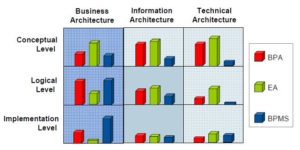I’m off on a week’s vacation now, then to speak at the IRM BPM conference in London the week of September 27th, but I wanted to give a final few notes on the BPM 2010 conference that happened this week.
The conference was hosted by Michael zur Muehlen at Stevens Institute in Hoboken, NJ: the first time that it’s been held in North America, and the first time (to my knowledge) that it’s had an industry track in addition to the usual research track. This allowed many people to attend – academics, practitioners, vendors and analysts – who might not normally be able to attend a European conference; that has raised the awareness of the conference significantly, and should help to continue its success in the future. Michael did a great job of hosting us (although I don’t think that he slept all week), with good logistics, good food and great evening entertainment in addition to the outstanding lineup of presenters.
I attended the research track, since it gives me a glimpse of where BPM will be in five years. The industry track, as good as it was, contains material that I can see at any of the several other BPM industry conferences that I attend each year. I started out in the BPM and Social Software workshop on Monday, then attended presentations on business process design, people and process, BPM in practice and BPM in education. Collaboration continues to be a huge area of study, fueled by the entry of many collaborative BPM products into the marketplace in the past year.
A key activity for me this week (which caused me to miss the process mining sessions, unfortunately) was the first organizational meeting for the Process Knowledge body of knowledge (BoK, and yes, I know that the two K’s are a bit redundant). Based on research from the Queensland University of Technology into what’s missing from current BoKs, a small group of us are getting the ball rolling on an open source/Creative Commons BoK, with a wide variety of contributors, and freely available for anyone to repurpose the material. I published an initial call to action, and Brenda Michelson, who is chief cat-herder in this effort, added her thoughts.
BPM 2011 will be in southern France the week of August 29th, so mark your calendar.

